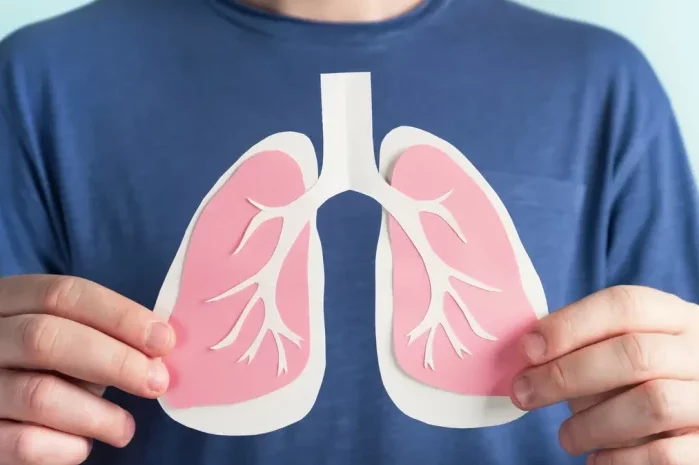Smoking has long been recognized as one of the most significant risk factors for respiratory diseases, including chronic obstructive pulmonary disease (COPD), lung cancer, and emphysema.
Quitting smoking is undoubtedly the most critical step towards improving lung health, but what comes next? Even after kicking the habit, former smokers may still face challenges in restoring their lung function and overall respiratory well-being.
In this comprehensive guide, we’ll explore effective strategies for enhancing lung health after smoking cessation, empowering individuals to take proactive steps towards revitalizing their respiratory system and enjoying a better quality of life.
The Impact of Smoking on Lung Health
Before delving into strategies for improving lung health after smoking, it’s essential to understand the detrimental effects that smoking can have on the respiratory system:
1. Damage to Lung Tissue:
Smoking exposes the lungs to harmful chemicals and toxins, causing inflammation, irritation, and damage to the delicate tissues and airways.
Over time, this damage can lead to reduced lung function, impaired breathing, and increased susceptibility to respiratory infections and diseases.
2. Development of Respiratory Conditions:
Chronic smoking is a leading cause of respiratory conditions such as COPD, emphysema, chronic bronchitis, and lung cancer.
These diseases can significantly impact lung function, mobility, and quality of life, making it essential to address smoking-related lung damage proactively.
3. Reduced Lung Capacity:
Smoking can diminish lung capacity and elasticity, making it harder for the lungs to expand and contract efficiently.
This reduction in lung function can result in shortness of breath, fatigue, and decreased exercise tolerance, limiting overall physical activity and well-being.
4. Increased Risk of Infections:
Smoking weakens the immune system and impairs the lungs’ ability to clear bacteria, viruses, and other pathogens effectively.
This heightened susceptibility to infections can lead to frequent respiratory illnesses, exacerbations of existing conditions, and prolonged recovery times.
Strategies for Improving Lung Health After Smoking Cessation
While quitting smoking is the single most impactful step towards improving lung health, there are several additional strategies that former smokers can incorporate into their daily routine to support respiratory wellness and enhance lung function:
1. Regular Physical Activity:
Engaging in regular exercise can improve lung function, increase lung capacity, and enhance overall cardiovascular health.
Activities such as walking, jogging, swimming, cycling, and yoga can help strengthen the respiratory muscles, improve oxygen uptake, and promote better circulation throughout the body.
2. Deep Breathing Exercises:
Practicing deep breathing exercises can help expand the lungs, improve oxygenation, and enhance respiratory efficiency.
Techniques such as diaphragmatic breathing, pursed-lip breathing, and belly breathing can help former smokers strengthen their respiratory muscles and alleviate feelings of breathlessness and anxiety.
3. Adequate Hydration:
Staying hydrated is essential for maintaining optimal lung health, as adequate hydration helps keep the airways moist and facilitates the clearance of mucus and toxins from the lungs.
Aim to drink plenty of water throughout the day and limit the consumption of dehydrating beverages such as alcohol and caffeinated drinks.
4. Healthy Diet:
Consuming a balanced diet rich in fruits, vegetables, whole grains, lean proteins, and healthy fats provides essential nutrients and antioxidants that support lung health and reduce inflammation.
Foods high in vitamin C, vitamin E, beta-carotene, and omega-3 fatty acids have been shown to have protective effects on the lungs and respiratory system.
5. Avoidance of Environmental Pollutants:
Minimizing exposure to environmental pollutants such as air pollution, secondhand smoke, and chemical fumes is crucial for protecting lung health, especially for former smokers.
Consider using air purifiers, avoiding areas with poor air quality, and taking precautions when exposed to respiratory irritants.
6. Respiratory Therapy:
Participating in pulmonary rehabilitation programs or respiratory therapy sessions can provide valuable support and education for former smokers looking to improve their lung health.
These programs often include breathing exercises, physical activity recommendations, and lifestyle modifications tailored to individual needs.
7. Regular Check-Ups and Screenings:
Routine medical check-ups, lung function tests, and screenings for respiratory conditions can help monitor lung health, detect any potential issues early, and provide timely interventions or treatments.
Discuss your history of smoking with your healthcare provider to determine appropriate screening recommendations and preventive measures.
8. Lifestyle Modifications:
Making positive lifestyle changes such as maintaining a healthy weight, managing stress, getting an adequate amount of sleep, and avoiding respiratory irritants can all contribute to better lung health and overall well-being.
Prioritize self-care practices that support respiratory wellness and promote a smoke-free lifestyle.
Conclusion
Improving lung health after smoking cessation is an ongoing journey that requires commitment, dedication, and proactive lifestyle choices.
By incorporating strategies such as regular physical activity, deep breathing exercises, adequate hydration, a healthy diet, avoidance of environmental pollutants, participation in respiratory therapy programs, and regular check-ups and screenings, former smokers can take significant steps towards revitalizing their respiratory system and reducing the risk of smoking-related diseases.
Remember that every positive change you make contributes to better lung health and a brighter future free from the harmful effects of smoking. Embrace a holistic approach to respiratory wellness, prioritize self-care, and celebrate every milestone along the way as you embark on the path to revitalized lung health and overall well-being.


























